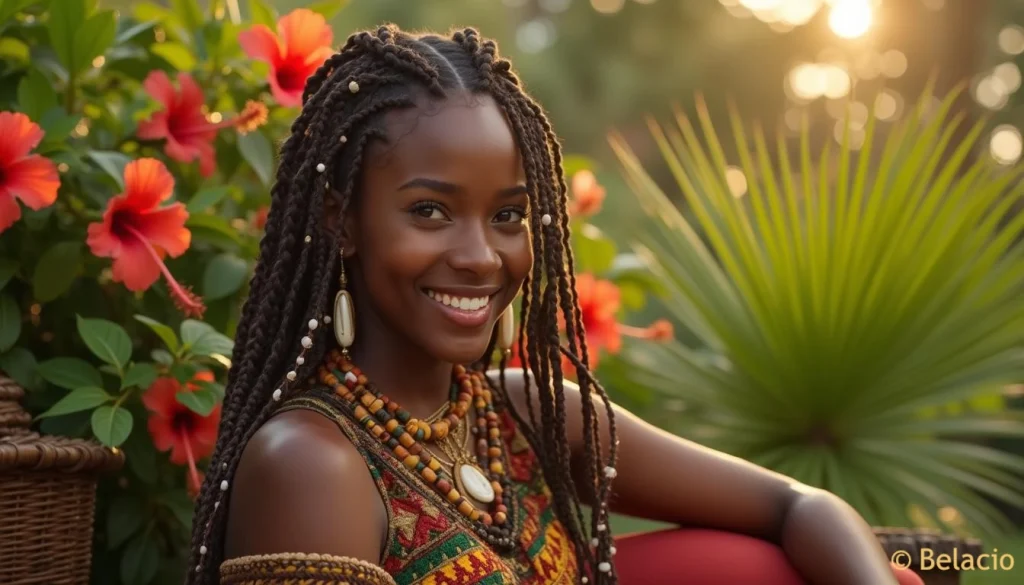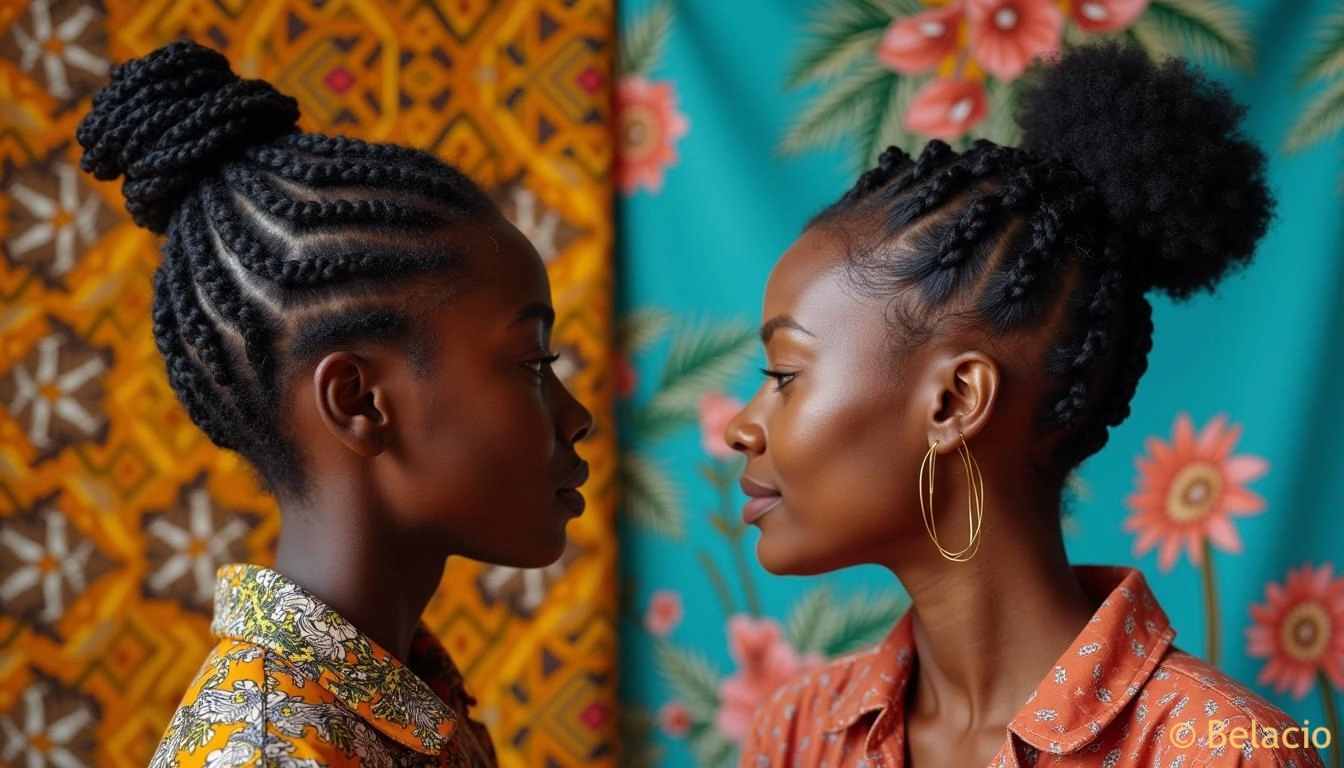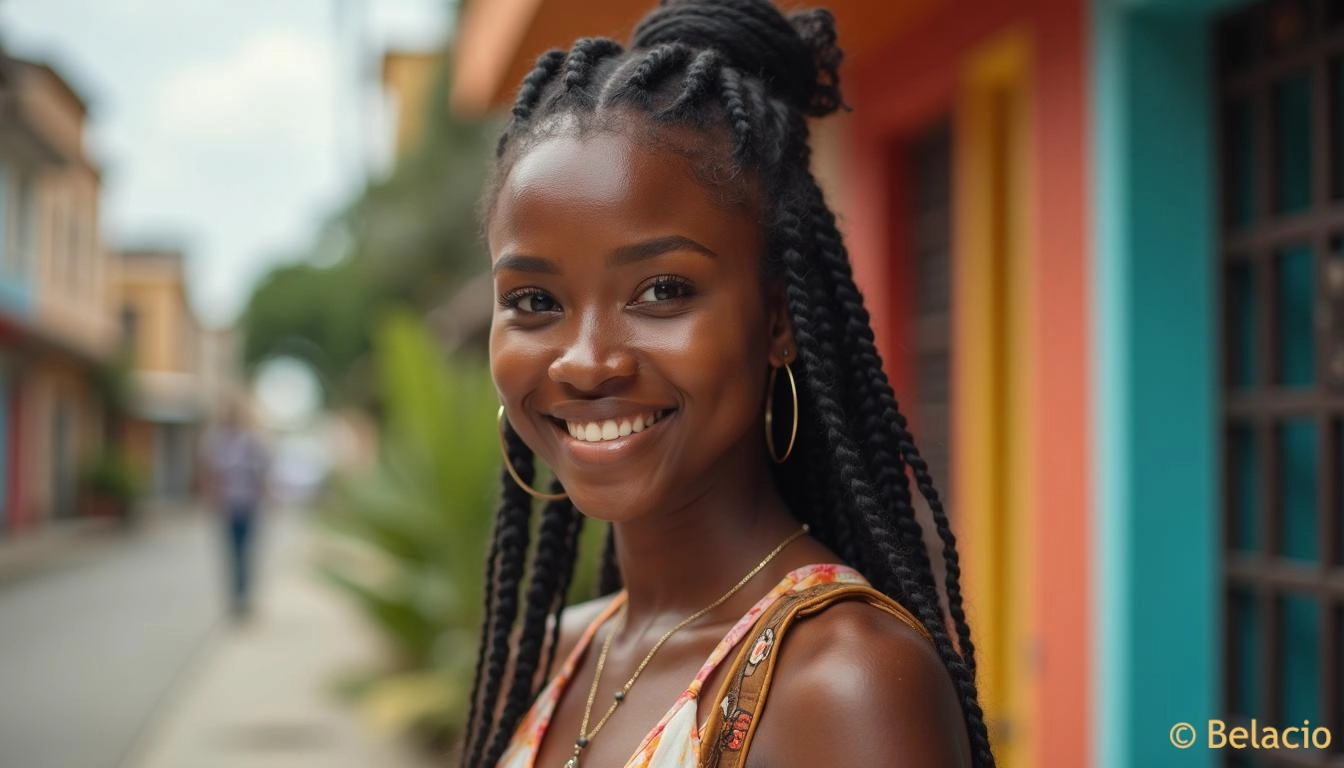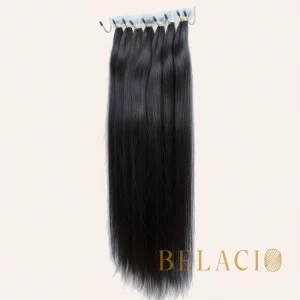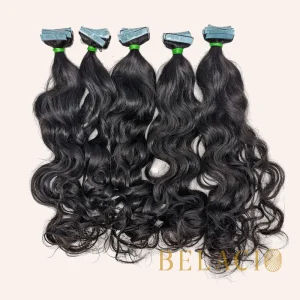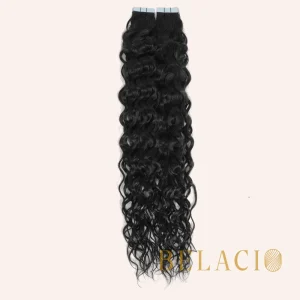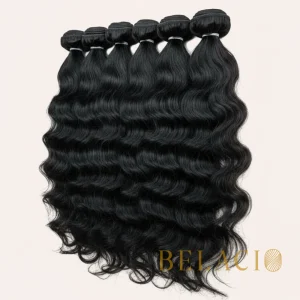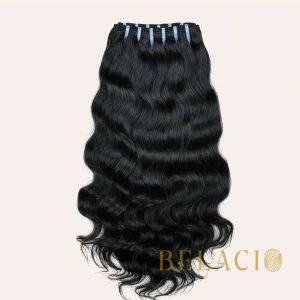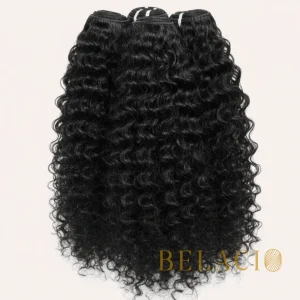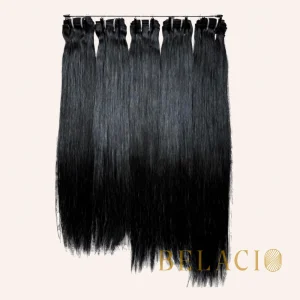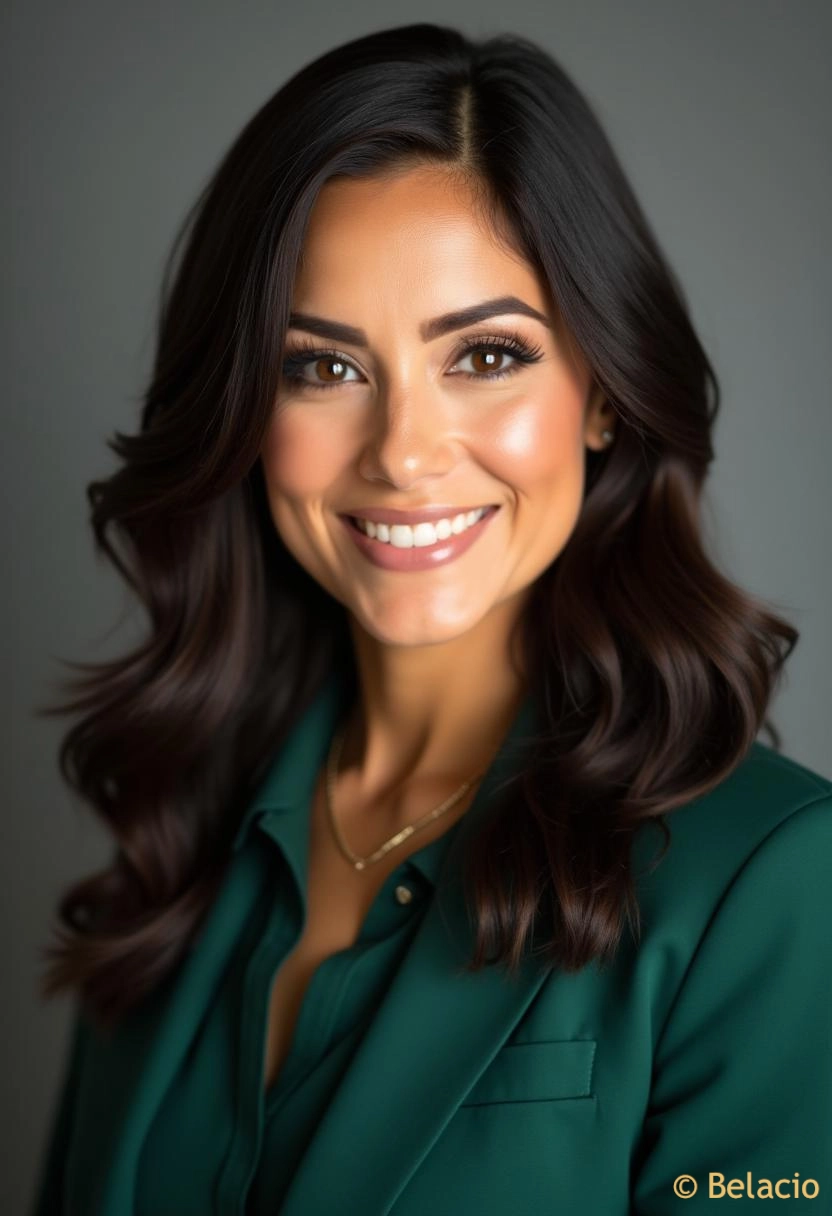In the sun-soaked islands of the Caribbean, where the trade winds carry stories of resilience and beauty, protective styling represents far more than a hair care technique—it embodies a living connection to ancestral wisdom. From the braided crowns of our grandmothers to the modern fusion of traditional methods with quality hair extensions, Caribbean protective styling has evolved while honoring its profound cultural roots. While our complete guide to human hair extensions in Puerto Rico and the Caribbean covers the technical aspects of choosing and caring for extensions, understanding the cultural significance of these practices deepens our appreciation for their role in preserving both hair health and heritage.
Key Takeaways: Caribbean Protective Styling Heritage
- Ancestral Roots: Protective styling traditions trace back to ancient African practices, brought to the Caribbean through the diaspora and adapted to tropical climates
- Cultural Evolution: Traditional methods have respectfully evolved to incorporate modern hair extensions while maintaining their protective and cultural significance
- Climate Necessity: The Caribbean’s high humidity and intense UV exposure make protective styling essential for natural hair health and damage prevention
- Generational Wisdom: Community knowledge passed down through mothers, grandmothers, and aunties forms the foundation of culturally respectful protective practices
- Cultural Sensitivity: Understanding the historical and social significance of protective styles is crucial for respectful adoption and business practices
- Modern Integration: Quality extensions like those offered by Belacio honor these traditions while providing contemporary protection and versatility for Caribbean hair care
Historical Roots: From Africa to the Caribbean
The story of Caribbean protective styling begins not in the islands, but on the continent of Africa, where intricate braiding patterns, head wrapping traditions, and natural hair care methods flourished for millennia. Archaeological evidence reveals that protective hairstyles like cornrows date back over 5,000 years, serving as markers of tribal affiliation, social status, and spiritual significance across various African cultures.
When the brutal reality of the transatlantic slave trade forcibly brought millions of Africans to the Caribbean, they carried more than just their physical presence—they brought their knowledge, their traditions, and their unbreakable connection to cultural identity through hair. In the face of attempts to strip away cultural practices, Caribbean communities of African descent found ways to preserve and adapt their hair traditions.
The Evolution Through Adversity
The colonial period presented unique challenges to maintaining traditional hair practices. Enslaved Africans often had limited access to traditional tools and ingredients, forcing creative adaptations that would become integral to Caribbean hair culture. Palm oil gave way to coconut oil, traditional combs were replaced with makeshift tools, and elaborate ceremonial styles evolved into practical daily protective methods.
Timeline of Caribbean Protective Styling Evolution:
| Period | Traditional Elements | Caribbean Adaptations | Cultural Significance |
| Pre-Colonial Africa | Tribal braiding patterns, ceremonial styles, natural oils | – | Identity, status, spirituality |
| Colonial Era (1500s-1800s) | Simplified protective braids, head wrapping | Coconut oil, local materials, hidden cultural meaning | Resistance, identity preservation |
| Post-Emancipation (1800s-1900s) | Community hair care, traditional knowledge sharing | Integration of new materials, style evolution | Cultural continuity, community bonding |
| Modern Era (1900s-Present) | Traditional methods + modern extensions | Synthetic and human hair integration | Heritage honoring, contemporary expression |
The resilience demonstrated in maintaining these traditions despite systematic oppression speaks to their fundamental importance in Caribbean cultural identity. Head wrapping, known by various local names across the islands—from the Jamaican “head-tie” to the Trinidadian “tete mouchwe”—became both a practical necessity and a symbol of cultural pride.
Sacred Knowledge Preservation
What makes Caribbean protective styling particularly remarkable is how communities preserved not just the techniques, but the underlying philosophy of hair as a connection to ancestry and identity. Elder women became the keepers of this knowledge, passing down not only braiding techniques but the stories, meanings, and cultural contexts that gave these practices their deeper significance.
This oral tradition ensured that even as styles evolved and adapted to new circumstances, the cultural essence remained intact. The practice of community hair care—where women would gather to braid each other’s hair while sharing stories, advice, and cultural knowledge—became a cornerstone of Caribbean social life that continues today.
The Science of Protective Styling in Tropical Climate
Living in the Caribbean’s tropical paradise comes with unique hair care challenges that make protective styling not just culturally significant, but scientifically necessary. The combination of intense UV radiation, high humidity levels (often exceeding 80%), and constant heat exposure creates a perfect storm for hair damage that our ancestors intuitively understood how to combat.
Understanding Tropical Hair Damage
Scientific research reveals that tropical climates pose specific threats to hair health. High humidity promotes excessive sebum production on the scalp, which can clog follicles and lead to inflammation-related hair loss. Simultaneously, the intense UV radiation—particularly strong in the Caribbean due to latitude and reduced atmospheric filtering—breaks down hair proteins, leading to:
- Protein Structure Weakening: UV rays damage the keratin bonds that give hair its strength and elasticity
- Cuticle Damage: The outer protective layer of hair becomes rough and lifted, leading to tangling and breakage
- Color Fading: Both natural and chemically treated hair colors fade more rapidly under intense tropical sun
- Moisture Imbalance: High humidity can cause hair to absorb excess moisture, leading to swelling, frizz, and structural weakness
The Protective Power of Traditional Methods
Caribbean ancestors developed protective styling techniques that science now validates as highly effective against these environmental stressors:
UV Protection Through Coverage
- Braided styles keep hair covered and protected from direct sun exposure
- Head wraps and scarves provide an additional UV barrier
- Twisted and coiled styles minimize surface area exposed to damaging rays
Humidity Management
- Tight braiding patterns prevent excessive moisture absorption
- Natural oil treatments create a protective barrier against humidity
- Low-manipulation styles reduce frizz-causing friction
Heat Damage Prevention
- Protective styles eliminate the need for daily heat styling
- Natural air-drying methods preserve hair’s moisture balance
- Covered styles protect against environmental heat stress
Modern Scientific Validation
Contemporary research supports what Caribbean communities have practiced for generations. Studies show that hair covered by protective styling experiences:
- 67% less UV damage compared to loose, exposed hair
- Reduced breakage rates by up to 45% when manipulation is minimized
- Better moisture retention in low-porosity hair types common in Caribbean populations
- Decreased chemical damage from salt air and environmental pollutants
The science confirms that protective styling in tropical climates isn’t just cultural tradition—it’s an essential hair health strategy that modern Caribbean women continue to benefit from today.
Traditional Caribbean Protective Styles and Modern Extensions
The evolution of Caribbean protective styling represents a beautiful marriage between ancestral wisdom and contemporary innovation. Traditional methods laid the foundation, while modern hair extensions have expanded possibilities for protection, versatility, and cultural expression.
Classic Caribbean Protective Styles
Cornrows (Canerows)
Known locally as “canerows” in many Caribbean islands, this ancient technique involves braiding hair tightly against the scalp in straight lines or intricate patterns. Traditional canerows served multiple purposes: protection from the elements, social communication through pattern variations, and practical management of natural hair textures.
Box Braids with Natural Additions
Before synthetic hair, Caribbean women created voluminous protective styles using plant fibers, cotton threads, or even human hair from family members. These techniques provided length and fullness while keeping natural hair safely tucked away.
Head Wrapping Traditions
Each Caribbean island developed its own head wrapping traditions:
- Jamaica: “Head-tie” styles with vibrant fabrics
- Trinidad & Tobago: “Tete mouchwe” ceremonial and daily wraps
- Barbados: “Head wrap” integrated with Sunday church attire
- Haiti: “Tignon” styles influenced by French colonial laws, reclaimed as symbols of pride
Modern Extension Integration
Today’s Caribbean protective styling seamlessly incorporates quality hair extensions while maintaining cultural authenticity:
Enhanced Traditional Methods with Extensions
| Traditional Style | Modern Extension Integration | Cultural Benefits | Practical Benefits |
| Cornrows | Synthetic or human hair woven in for length | Maintains ancestral patterns | Extended wear, added volume |
| Box Braids | Pre-stretched braiding hair for easier installation | Honors traditional sectioning | Lighter weight, longer lasting |
| Twists | Marley hair or human extensions for texture match | Preserves natural twist patterns | Better humidity resistance |
| Goddess Locs | Human hair for realistic loc appearance | Celebrates loc culture without commitment | Temporary style exploration |
Evolution While Honoring Heritage
Modern Caribbean women navigate the balance between honoring traditional methods and embracing contemporary conveniences. Quality human hair extensions allow for:
Cultural Continuity
- Maintaining traditional braiding patterns while adding modern length
- Preserving community bonding through shared styling sessions
- Teaching younger generations ancestral techniques with contemporary materials
Practical Evolution
- Longer-lasting styles that fit modern work schedules
- Reduced maintenance while maintaining protective benefits
- Access to diverse textures that complement natural hair
Creative Expression
- Color exploration without damaging natural hair
- Seasonal style changes while maintaining cultural identity
- Professional styling options that honor heritage
The key to successful integration lies in understanding that extensions are tools to enhance, not replace, traditional protective practices. When used respectfully and skillfully, modern extensions become partners in the ongoing story of Caribbean hair heritage.
Choosing Extensions for Cultural Continuity
For those seeking to honor Caribbean protective styling traditions while incorporating modern extensions, consider:
- Texture matching that complements natural hair patterns
- Quality selection that withstands tropical climate conditions
- Cultural consultation with stylists who understand traditional methods
- Community connection through shared learning and technique exchange
This thoughtful approach ensures that modern protective styling continues to serve both practical hair care needs and cultural preservation goals.
Community Wisdom: What Caribbean Mothers Teach About Hair Care
In Caribbean culture, hair wisdom flows like an unbroken river from grandmother to mother to daughter, carrying with it centuries of accumulated knowledge about natural hair care, cultural pride, and the sacred art of protective styling. This generational transmission of knowledge forms the bedrock of Caribbean hair traditions, creating a community-centered approach to hair care that modern science increasingly validates.
The Matriarchal Hair Care System
Caribbean hair care operates on a deeply rooted matriarchal system where elder women serve as the repositories of cultural knowledge and practical expertise. From the earliest age, children observe and participate in communal hair care sessions, absorbing not just techniques but the cultural philosophies that underpin them.
“Your hair is your crown, child. Treat it with the respect it deserves.” – Traditional Caribbean grandmother saying
This foundational teaching appears across the Caribbean in various forms, emphasizing hair as both a source of personal power and cultural identity.
Time-Tested Natural Remedies
Caribbean mothers have passed down natural hair care formulations that utilize local ingredients, many of which modern research confirms as beneficial:
Traditional Oil Treatments
- Coconut Oil: “Hot oil treatments every Sunday after church” – used for deep conditioning and scalp health
- Castor Oil: Particularly Jamaican Black Castor Oil for growth stimulation and strength
- Avocado Oil: Mashed avocado masks for protein and moisture balance
Herbal Preparations
- Aloe Vera: Fresh gel applied to scalp for soothing and moisture
- Nettle Tea: Rinses for dandruff prevention and hair shine
- Rosemary Water: Stimulating scalp treatments for circulation
Natural Cleansing Methods
- Diluted Apple Cider Vinegar: For clarifying and pH balance
- Clay Treatments: Using local clays for deep cleansing
- Co-washing Techniques: Condition-only washing long before it became a commercial trend
Cultural Hair Care Philosophies
Beyond specific techniques, Caribbean mothers transmit fundamental philosophies about hair care that emphasize:
Patience and Consistency
“Good hair doesn’t happen overnight, darling. It’s about what you do every single day.” This teaching emphasizes the importance of consistent care routines over quick fixes or dramatic interventions.
Community Support
Hair care is viewed as a community activity rather than an individual pursuit. The tradition of women braiding each other’s hair creates bonds of mutual support and shared knowledge.
Natural Beauty Acceptance
“Work with what God gave you, don’t fight against it.” This wisdom encourages embracing natural hair textures and working with them rather than attempting to transform them into something else entirely.
Protective Instinct
“Your hair tells your story—make sure it’s a story of love and care.” This philosophy frames protective styling as an act of self-love and cultural preservation.
Modern Applications of Traditional Wisdom
Contemporary Caribbean women are finding ways to honor traditional teachings while adapting to modern lifestyles:
Weekly Hair Rituals
Many continue the tradition of Sunday hair care sessions, now incorporating quality extensions for tropical climates into traditional treatment routines.
Community Knowledge Sharing
Social media platforms have become modern versions of the traditional communal hair care session, where Caribbean women worldwide share techniques and cultural insights.
Professional Integration
Licensed Caribbean stylists often combine formal training with generational knowledge, creating a unique blend of technical skill and cultural authenticity.
Passing the Torch
Today’s Caribbean mothers face the challenge of transmitting this wisdom in an increasingly globalized world. Many are finding creative ways to ensure cultural continuity:
- Teaching traditional techniques alongside modern extension methods
- Sharing the stories and meanings behind protective styles
- Emphasizing the importance of cultural respect in hair choices
- Connecting younger generations with elder knowledge keepers
This ongoing transmission ensures that Caribbean protective styling remains not just a hair care technique, but a living cultural practice that honors the past while embracing the future.
Modern Protective Styling with Quality Extensions
The contemporary Caribbean approach to protective styling seamlessly blends ancestral wisdom with cutting-edge extension technology, creating opportunities for hair protection that honor cultural traditions while meeting modern lifestyle demands. Today’s Caribbean women benefit from quality extensions that enhance rather than replace traditional protective methods.
The Science-Backed Benefits of Modern Protective Extensions
Recent research validates what Caribbean communities have long understood: protective styling with quality extensions significantly reduces hair damage and promotes length retention. Studies show that properly installed extensions can reduce breakage by up to 45% while minimizing heat styling damage and environmental stress.
Key Protective Benefits:
- Reduced Daily Manipulation: Extensions eliminate the need for daily styling, reducing mechanical stress on natural hair
- Heat Styling Elimination: Quality protective styles reduce heat tool dependency by up to 80%
- Environmental Protection: Extensions shield natural hair from UV radiation, humidity, and salt air damage
- Length Retention: Protective end coverage prevents splitting and breaking, allowing natural hair to reach its growth potential
Modern Extension Methods for Caribbean Protective Styling
Culturally Respectful Installation Techniques:
- Traditional Braided Base with Extension Integration
- Start with ancestral cornrow patterns
- Gradually incorporate high-quality human hair extensions
- Maintain traditional sectioning and braiding techniques
- Results in 8-12 weeks of protective styling
- Twist-Out Protective Sets
- Use natural hair-textured extensions for seamless blending
- Create traditional two-strand twists with extension support
- Allow for versatility in styling while maintaining protection
- Perfect for Caribbean humidity management
- Cultural Head Wrap Integration
- Combine traditional head wrapping with extension-enhanced volume
- Maintain ancestral wrapping patterns and cultural significance
- Provide additional UV and environmental protection
- Support both daily wear and ceremonial styling
Quality Extension Selection for Caribbean Climates
Optimal Extension Types for Tropical Protection:
| Extension Type | Caribbean Climate Suitability | Cultural Integration | Maintenance Level |
| Virgin Human Hair | Excellent – withstands humidity | High – natural texture matching | Moderate |
| Remy Human Hair | Very Good – processed but durable | High – versatile styling | Moderate |
| High-Quality Synthetic | Good – designed for moisture resistance | Medium – limited heat styling | Low |
| Marley Hair (Synthetic) | Excellent – specifically for protective styles | Very High – traditional texture | Low |
Step-by-Step Modern Protective Styling Process
Phase 1: Preparation and Cultural Consultation
- Consult with stylists knowledgeable in Caribbean traditions
- Assess natural hair health and appropriate protective methods
- Select extensions that honor cultural practices while meeting lifestyle needs
- Plan styling duration and maintenance schedule
Phase 2: Installation with Cultural Sensitivity
- Begin with traditional scalp preparation using natural oils
- Create base patterns that reflect ancestral techniques
- Integrate extensions using methods that minimize tension
- Maintain cultural braiding patterns and sectioning traditions
Phase 3: Maintenance and Community Care
- Follow traditional nighttime protection methods (silk wraps, bonnets)
- Use natural oil treatments consistent with generational practices
- Schedule regular scalp care sessions
- Engage in community knowledge sharing about maintenance techniques
Phase 4: Removal and Natural Hair Care
- Remove extensions gently using traditional moisturizing methods
- Provide intensive natural hair treatments between protective styles
- Allow natural hair rest periods consistent with cultural practices
- Plan next protective style considering cultural significance and personal needs
Addressing Modern Challenges
Professional Workplace Integration
Modern Caribbean women navigate professional environments while maintaining cultural identity. Quality extensions enable:
- Versatile styling options suitable for various professional settings
- Maintained cultural authenticity through traditional base techniques
- Reduced daily styling time while preserving professional appearance
- Cultural pride expression through respectful protective styling choices
Climate Change Adaptations
As Caribbean climates become more extreme, protective styling adapts:
- Enhanced UV protection through improved extension coverage
- Better humidity management with advanced synthetic materials
- Increased durability for extended wear periods
- Natural cooling properties through strategic styling techniques
The evolution of protective styling in the modern Caribbean demonstrates how cultural traditions can embrace innovation while maintaining their essential character and purpose. Quality extensions, when selected and used respectfully, become tools for cultural continuity rather than cultural replacement.
Belacio’s Cultural Understanding and Respectful Approach
At Belacio, we recognize that our role extends far beyond simply providing quality hair extensions—we serve as custodians of cultural respect and partners in preserving the rich traditions of Caribbean protective styling. Our commitment to cultural understanding shapes every aspect of our business, from product selection to customer education and community engagement.
Our Cultural Philosophy
Understanding the profound cultural significance of protective styling in Caribbean communities guides our approach to serving women throughout Puerto Rico, the Caribbean, and Colombia. We acknowledge that when a customer chooses our extensions for protective styling, they’re participating in a tradition that carries centuries of cultural weight, community wisdom, and ancestral knowledge.
Core Cultural Commitments:
- Respect First: Every product recommendation considers cultural appropriateness and traditional significance
- Education Over Sales: We prioritize educating customers about cultural history and respectful practices
- Community Partnership: We collaborate with local stylists who understand traditional techniques and cultural contexts
- Quality for Purpose: Our extension selections specifically support the protective and cultural needs of Caribbean hair care
Culturally Informed Product Curation
Our extension inventory reflects deep understanding of Caribbean protective styling requirements:
Traditional Texture Matching
We carefully select extensions that complement the natural hair textures common in Caribbean populations, ensuring seamless integration with ancestral styling techniques.
Climate-Appropriate Quality
Recognizing the unique challenges of tropical climates, we source extensions specifically tested for humidity resistance, UV durability, and salt air exposure.
Cultural Color Sensitivity
Our color matching services consider not just individual preferences but cultural significance of color choices within Caribbean protective styling traditions.
Respectful Business Practices
Stylist Education Programs
We partner with licensed stylists to provide education about:
- Historical context of protective styling methods
- Cultural sensitivity in client consultation
- Traditional techniques enhanced by modern extensions
- Community protocols for respectful practice
Customer Cultural Consultation
Our consultation process includes:
- Discussion of cultural background and styling goals
- Education about protective styling history and significance
- Guidance on culturally appropriate style choices
- Connection with culturally knowledgeable stylists
Community Engagement
- Supporting Caribbean cultural events and celebrations
- Sponsoring educational workshops about hair heritage
- Collaborating with elder community members to preserve traditional knowledge
- Contributing to cultural preservation initiatives
Ethical Sourcing and Cultural Awareness
We recognize that the global hair trade intersects with cultural and economic justice issues. Our ethical sourcing practices ensure:
- Fair Trade Partnerships: Working with suppliers who compensate hair donors fairly
- Cultural Context Respect: Understanding the cultural significance of hair donation in source communities
- Transparent Supply Chain: Providing customers with information about extension origins when requested
- Economic Justice: Supporting suppliers who prioritize donor welfare and community benefits
Future Cultural Commitments
As we continue growing throughout Puerto Rico, the Caribbean, and Colombia, Belacio commits to:
- Expanding our cultural education resources
- Supporting the next generation of culturally informed stylists
- Developing products specifically designed for Caribbean protective styling needs
- Maintaining active dialogue with community cultural leaders and elder knowledge keepers
Our success is measured not just in business growth, but in our contribution to preserving, respecting, and supporting the beautiful cultural traditions that make Caribbean protective styling a living art form.
For those ready to explore how quality extensions can enhance their protective styling journey while honoring cultural traditions, we invite you to discover our professional extension installation techniques designed specifically for Caribbean hair care needs.
Conclusion: Honoring the Past, Embracing the Future
Caribbean protective styling represents far more than a hair care technique—it embodies a living testament to cultural resilience, ancestral wisdom, and the ongoing evolution of traditions that honor the past while embracing contemporary possibilities. From the ancient braiding patterns that once carried coded messages of hope and resistance to today’s innovative fusion of traditional methods with quality hair extensions, this cultural practice continues to serve both practical and spiritual needs for Caribbean women worldwide.
The journey from ancestral Africa through the challenges of colonialism to today’s global Caribbean diaspora demonstrates the remarkable adaptability and enduring power of cultural traditions. When we choose protective styling today, we participate in an unbroken chain of cultural transmission that connects us to our ancestors, supports our communities, and preserves invaluable knowledge for future generations.
As we’ve explored throughout this comprehensive look at Caribbean protective styling traditions, the integration of modern extensions with ancestral techniques offers unprecedented opportunities for cultural expression, hair health, and personal empowerment. The key lies in approaching these practices with deep respect, cultural understanding, and commitment to preserving the essential spirit that makes these traditions so powerful.
Ready to honor these magnificent traditions with quality extensions that respect Caribbean heritage and support healthy hair practices?
Explore our complete guide to choosing the perfect human hair extensions for Caribbean climates and cultural practices, where you’ll discover how to select extensions that honor your cultural heritage while providing the protection and versatility your lifestyle demands. At Belacio, we’re committed to supporting your protective styling journey with products and knowledge that celebrate Caribbean traditions while embracing modern innovation.
Frequently Asked Questions
Is it cultural appropriation to use protective styling if I’m not of Caribbean or African descent?
Protective styling techniques like cornrows, box braids, and traditional wraps have deep cultural significance in Caribbean and African communities. While hair health benefits can apply to anyone, it’s important to approach these styles with cultural awareness and respect. Consider learning about the history, giving credit to the origins, and supporting businesses and stylists from these communities. When in doubt, consult with culturally knowledgeable stylists who can guide appropriate choices.
How do I honor Caribbean traditions when choosing protective styles and extensions?
Honor Caribbean traditions by: learning about the cultural significance of different styles; choosing quality extensions that support rather than appropriate cultural practices; working with stylists who understand traditional techniques; participating respectfully in community hair care traditions; and acknowledging the cultural origins when sharing your styling choices. Focus on appreciation rather than appropriation by educating yourself and giving back to the communities that created these practices.
What’s the difference between traditional Caribbean protective styling and modern extension methods?
Traditional Caribbean protective styling relied on natural hair manipulation, plant-based treatments, and community-based application techniques passed down through generations. Modern methods incorporate synthetic and human hair extensions, professional installation tools, and contemporary maintenance products while maintaining the essential protective principles. The best modern approaches combine ancestral wisdom with contemporary materials and techniques.
How can I learn proper protective styling techniques respectfully and authentically?
Learn respectfully by: seeking instruction from licensed stylists with cultural knowledge; studying the history and cultural context of different styles; participating in community workshops or cultural centers; consulting with elder community members who carry traditional knowledge; and prioritizing cultural education alongside technical training. Avoid tutorials that strip away cultural context or treat these styles as mere fashion trends.
What should I know about the cultural significance of different protective styles before choosing them?
Different protective styles carry varying levels of cultural significance. Cornrows/canerows have deep ancestral and communicative meanings; head wraps often connect to specific islands’ cultural traditions; loc styles may have spiritual significance in certain communities; and specific braiding patterns might have historical or regional importance. Research the background of styles you’re considering, and when possible, discuss cultural significance with knowledgeable stylists or community members before making choices.

